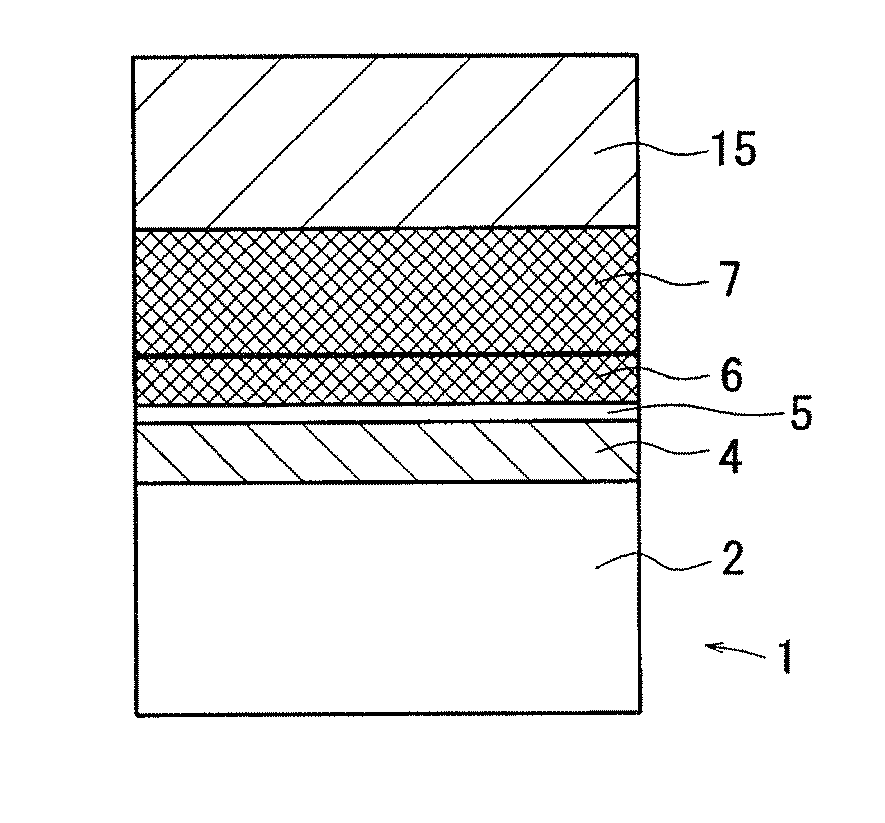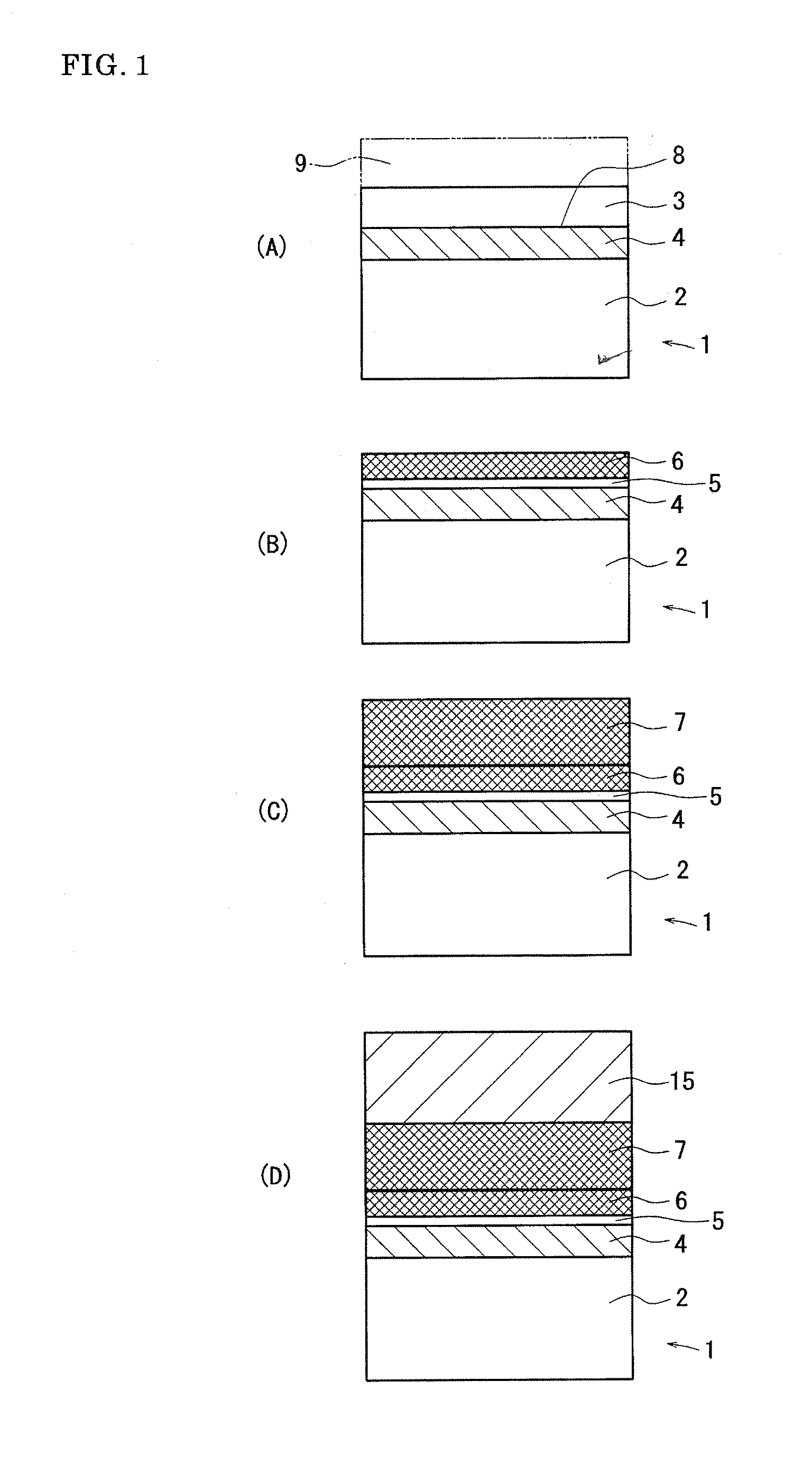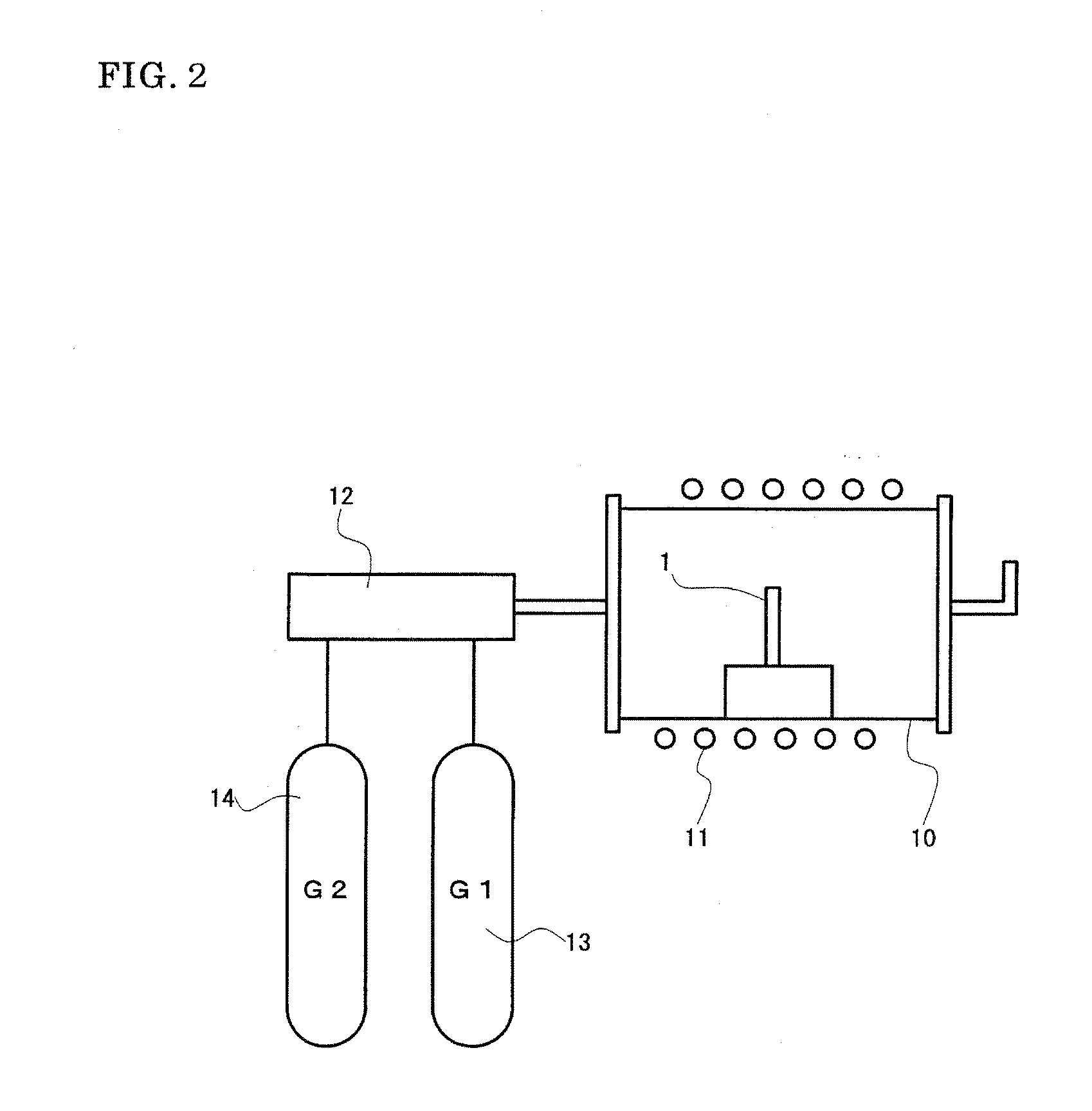Method for manufacturing nitrogen compound semiconductor substrate and nitrogen compound semiconductor substrate, and method for manufacturing single crystal sic substrate and single crystal sic substrate
- Summary
- Abstract
- Description
- Claims
- Application Information
AI Technical Summary
Benefits of technology
Problems solved by technology
Method used
Image
Examples
example a
EXAMPLE A1
[0096]A (111) SIMOX substrate of which the thickness of the surface Si layer 3 therein is 10 to 14 nm (SOI-A), a (111) SIMOX substrate of which the thickness of the surface Si layer 3 therein is 18 to 22 nm (SOI-B), and a (111) SOI substrate of such attachment (SOI-C) are prepared as starting materials. Each SOI substrate is inserted into an electric furnace as a specimen, and propane and hydrogen gas are introduced into the electric furnace at flow rates of 100 seem and 10 SLM respectively so that an atmosphere in the electric furnace is heated to reach a temperature of 1250° C., then kept for 15 minutes at the same temperature.
[0097]By this step, a silicon layer of 3 to 7 nm from the surface side of each surface Si layer 3 is carbonized to convert it into the single crystal SiC layer 6 of 3 to 7 nm thickness (seed layer). Thereby, SOI-A, SOI-B, and SOI-C have a film structure in which the residual Si layers 5 of 3 to 11 nm, 9 to 19 nm, and approximately 9900 to 1100 nm r...
example a2
[0102]A (111) SIMOX substrate of which the thickness of the surface Si layer 3 therein is 10 to 14 nm (SOI-A), a (111) SIMOX substrate of which the thickness of the surface Si layer 3 therein is 18 to 22 nm (SOI-B), and a (111) SOI substrate of such attachment (SOI-C) are prepared as starting materials, to and are operated a carbonization and heat treatment under the same condition with the Example Al. By this step, a silicon layer of 3 to 7 nm from the surface side of each surface Si layer 3 is carbonized to convert it into the single crystal SiC layer 6 of 3 to 7 nm thickness. Thereby, SOI-A, SOI-B, and SOI-C have a film structure in which the residual Si layers 5 of 3 to 11 nm, 9 to 19 nm, and approximately 9900 to 1100 nm remains in the lower layer parts thereof, respectively.
[0103]Continuously, the wafer is inserted into the depressurized epitaxial-growth furnace and heated so that the temperature of the wafer reaches 1150° C. while 3 seem of monomethylsilane is introduced into...
example b
[0147]Next, descriptions will be given about an Example B of the method of the single crystal SiC substrate in the present invention.
PUM
| Property | Measurement | Unit |
|---|---|---|
| Thickness | aaaaa | aaaaa |
| Nanoscale particle size | aaaaa | aaaaa |
| Nanoscale particle size | aaaaa | aaaaa |
Abstract
Description
Claims
Application Information
 Login to View More
Login to View More - R&D
- Intellectual Property
- Life Sciences
- Materials
- Tech Scout
- Unparalleled Data Quality
- Higher Quality Content
- 60% Fewer Hallucinations
Browse by: Latest US Patents, China's latest patents, Technical Efficacy Thesaurus, Application Domain, Technology Topic, Popular Technical Reports.
© 2025 PatSnap. All rights reserved.Legal|Privacy policy|Modern Slavery Act Transparency Statement|Sitemap|About US| Contact US: help@patsnap.com



